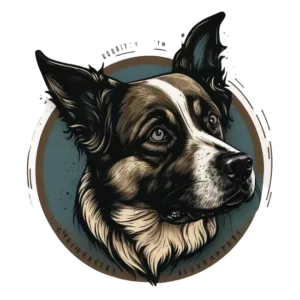
When it comes to training a puppy, one of the most critical things to do is teach them their name. As puppy owners, we can’t help but wonder how long does it take for a puppy to learn its name. The good news is, it doesn’t take too long for our canine friends to catch on. In this blog post, I’ll provide you with answers to the question of how long does it take for a puppy to learn its name, an overview of the best techniques for teaching puppies their names, as well as tips for shortening the learning process and other related topics.
What is The Average Time Frame for Teaching A Puppy Its Name?
It’s incredibly important for puppies to learn their name as soon as they come into your home. Recognition can play an important role in strengthening the bond between you and your pup, and establishing trust between you both. But it’s not an easy process, and can depend on several factors, such as age, environment, and breed.
Establishing a Baseline
A puppy’s age and mental development can play a big part in the learning process. Generally, younger puppies will take longer to learn and respond to their name, compared to ones who are a few months older. Puppies who are about 16 to 18 weeks old tend to have the best success rates. But the key is to be patient, as puppies have a lot of information to process.
Factors That Influence How Quickly A Puppy Learns Its Name
But age isn’t the only factor that affects how long it will take a puppy to learn its name, as there are some breeds who are more predisposed to being intelligent and therefore, easier to train. Smaller breeds, such as poodles, terriers and miniature schnauzers, tend to respond more quickly to training commands, compared to larger breeds.
But breed isn’t the only thing that’s important. Your pup’s environment also plays a big part in the learning process. Stress, whether from too many distractions or introductions to new people, can slow down the process significantly.
Example: Story of One Puppy That Took an Above Average Amount of Time to Learn its Name
Take, for example, the story of Daisy. Daisy was a German Shepherd who had been adopted by a family at 8 weeks old. Despite the owner’s best efforts, Daisy had trouble responding to her name, and took longer than her 16 to 18 week age range would suggest.
The owners realized that Daisy had to learn in a stress-free environment, which meant limiting the number of introductions she was having with strangers. They also implemented a consistent reward system, where Daisy was given treats for responding to her name. With lots of patience, Daisy was able to learn her name after about 4 months.
Example: Story of One Puppy That Took an Below Average Amount of Time to Learn its Name
Axle was a 6 month old golden retriever pup who was welcomed into a home with an already established family dynamic. The family provided Axle with a consistent reinforcement schedule, with plenty of toys and games as rewards.
Axle quickly responded to his name in 3 weeks, and was soon joining in the family’s routine. The key was providing him with a consistent environment, with the same reward schedule, so he quickly adjusted to the family dynamic and learned his name.
Summary
The number of weeks it takes for a puppy to learn its name depends on a variety of factors, such as age, breed, and environment. It’s best to provide puppies with continual reinforcement, and a stress-free environment, to give them the best chance of success. Generally, most puppies will understand their name after about four weeks, although this may take slightly longer for some breeds. If you’re struggling to get your puppy to understand its name, it’s best to get advice from an experienced pet behaviourist. With patience, consistency and the right approach, your pup will eventually learn its name.

The Best Techniques For Teaching Puppies Their Names
When you first bring a new puppy into your home, one of the first things you will want to teach them is their name. Teaching your pup its name is one of the most important things you can do. Not only does it help you communicate with your puppy, but it also helps them understand who they are, who you are, and what their place is in the world. So, how long does it take for a puppy to learn its name?
The answer to this question varies, depending on the pup’s age and intelligence, but most puppies can learn their name in a few short weeks with some patience and consistency. To help make this process as easy as possible and encourage your pup to learn their name, follow these five tips and strategies for teaching your puppy their name:
Establish Positive Reinforcement
Positive reinforcement is one of the best ways to help your pup learn their name quickly and effectively. Whenever they respond to their name, make sure to reward them with treats, a small piece of food, and plenty of attention, such as verbal praise and petting. This kind of positive behavior can significantly accelerate the learning process.
Train Regularly & Consistently
To help ensure that your pup remembers their name and can easily recognize it, you should make sure to train them at least twice a day using a consistent method and tone of voice. This regular repetition will help your pup become comfortable hearing and responding to their name.
Stick with a Short Name
Puppies tend to have difficulty remembering more than one or two syllables, so make sure to keep their name short and relatively simple. This makes it easier for them to listen for and take notice of their name when you call to them.
Give the Name Meaning
Once you have decided on a name for your pup, make sure to use it in different contexts throughout the day. This helps to associate the name with the pup, making it easier for them to relate to and understand.
Be Patient
Puppies may take a little bit longer than adult dogs to learn their new name, so don’t get frustrated if they don’t respond or recognize their name right away. Remain patient, and be sure to praise them when they do get it right.
Include Your Puppy
If your puppy is in the same room as you and another person or pet that they recognize, calling out their name will help them to focus on and recognize their own name. This will help them to train and remember their name more quickly and effectively.
Learning your pup’s name can be a long and arduous process, but with patience and consistency, you will eventually succeed! By following the tips and strategies outlined above, you can help give your pup the best chance of quickly learning their name.

Tips For Shortening The Learning Process
When it comes to teaching a puppy its name, the most important thing to remember is to be patient. Training a puppy, particularly teaching its name, is a process, and it will take some time. Here are some tips to help shorten the process and make it easier on you and your pup!
Find The Right Incentive
One key strategy to teaching a puppy its name is to use accountability and provide positive feedback and treats when they make progress. Offering treats, positive words of affirmation, or something that your puppy loves when they show improvement is a great way to help them internalize the training and make it easier for them to put in the effort.
Break It Down Into Steps
Rather than expecting your puppy to learn its name overnight, it’s important to take it one step at a time. Choose a command, such as sit or come, and give your pup manageable chunks of information to learn. By breaking down the process, you can reward your pup little by little—every time they make progress and come a step closer to understanding the important command!
Show And Tell
Humans aren’t the only ones who learn visually. Puppies respond to visual cues, so be sure to help your puppy understand which command to obey by using gestures and treats. Having a treat to offer your pup in between commands can help reinforce the training and make it easier for them to understand.
Practice Repetitiously
Quickly going through a few reps of a new command will help teach your pup to understand and eventually internalize it. This helps to keep your pup’s focus on the task at hand and allows them to understand which command to obey.
Be Patient
Teaching a puppy its name is a process, and it will take some time. Don’t be discouraged if your pup doesn’t learn its name on the first try—it may take several months of consistent work for them to really understand it. Simply use examples from other owners who have walked their pup through the same process, and be patient with your pup as they learn.
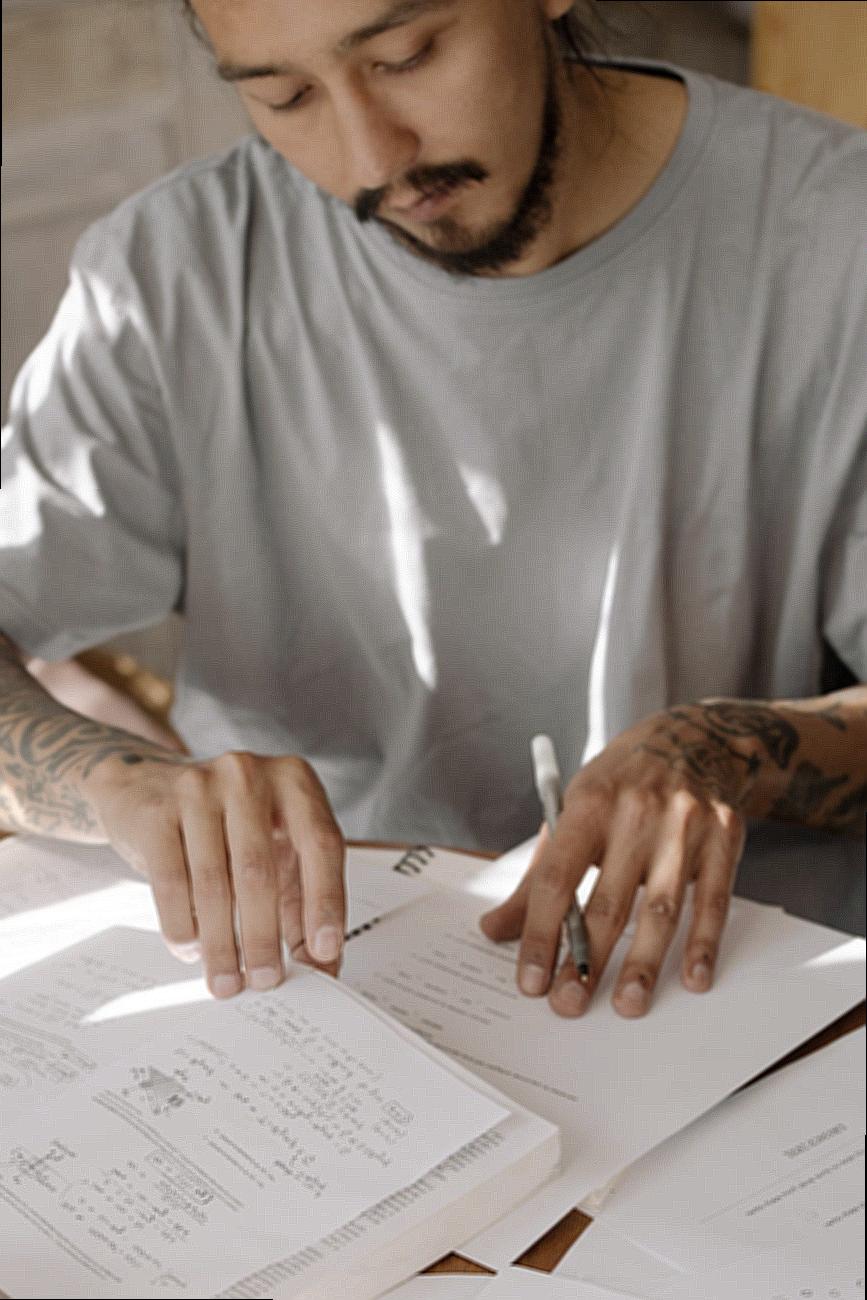
Creating Positive Associations With Your Puppy’s Name
One of the most important things that you need to do when you get a new puppy is to teach it its name. This is part of the bonding process, and it can be a bit challenging if you don’t have a plan in place. Here are a few tips to help you get your puppy to learn its name in no time.
Establish a training routine and reward system
A reward system is an essential part of puppy training. Dog treats, verbal praise, and toys are excellent rewards for when your puppy gets it right. Make sure to establish a consistent rewarding system so that your puppy knows what to expect each time it responds properly.
Keep sessions positive and brief
Your puppy’s attention span is limited, so keep training sessions to a maximum of 10 minutes. Going too long or trying to teach your puppy too many things at once can lead to frustration and confusion. Make sure to give your puppy time to digest the information before you move on to more advanced concepts.
Start with single commands
When you’re trying to teach your puppy its name, start with single words such as “sit” or “stay”. Once your puppy has mastered those basic commands, you can move on to more complex requests. Asking your puppy to do too many things at once can overwhelm your pup and reduce its ability to learn.
Use your puppy’s name when giving commands
Start each training session or command by saying your puppy’s name. This will help your puppy build a positive association with its name, and it will become more responsive to it in the future.
Choose the best time to train
The best time to start training your puppy is before it get too tired or distracted. For example, training after a walk when your puppy has burned off its energy is usually ideal. Pick a time of day when you and your pup are both feeling active and ready for a challenge.
Use positive reinforcement
Your puppy will learn better and faster if you use positive reinforcement. Verbal praises and treats are excellent rewards for correct responses, so make sure to use them liberally. Ignoring or punishing bad behavior can be counterproductive, so make sure to focus on the things your puppy is doing right.
Ask friends to help
Having family and friends participate in the training process can be very helpful. Ask them to call your puppy’s name and reward it when it gets it right. This will help your puppy learn its name faster.
When you take the time to create positive associations with your puppy’s name and follow the tips above, you can get your pup to recognize its name in as little as a week. Good luck!

Making Use Of Food Rewards In The Training Process
When training puppies, positive reinforcement is an incredibly powerful tool — and that includes rewarding desired behaviour with tasty treats for maximum impact. Food rewards can be a great way to teach puppies their name as well as help them understand commands and tricks. In this article, we’ll go over how food rewards work, as well as what types of treats work best and how to use them in the training process.
Explaining How Food Rewards Work
Positive reinforcement can be defined as a training technique that combines providing a reward with displaying desirable behaviour. When puppies are rewarded for displayed behaviour, they are conditioned to think that this behaviour is beneficial and should be repeated to receive the same reward. Food rewards are a great way to positively reinforce desired behaviour.
Choosing Rewards
When selecting rewards for training puppies, it’s important to think about what type of treats you are giving. Examples of appropriate food rewards include fresh veggies, low-sugar fruit (like blueberries) and small bits of boiled chicken, beef or pork. Steer clear of high-fat treats, foods with artificial additives and anything that could cause an upset stomach.
Applied Practice
Once you have chosen suitable food rewards, it’s time to get to the actual training process. First, make sure to have the treat in hand before you start so the pup can see that you have something of value. As you give commands, allow the pup to understand that they will receive the reward after they successfully complete the task. Once they do, provide the reward immediately — this is known as “catching behavior” and help reinforce the desired behaviour.
Offering Examples
To get an even better understanding of how food rewards can help specifically with teaching puppies their names, let’s take a look at a few examples.
Mark was having a difficult time getting his husky pup, Copper, to recognize and respond to his name. He decided to try food rewards and it made a huge difference. By rewarding Copper with a small treat every time he responded correctly to his name, Mark was able to reinforce this behavior and get Copper to recognize his name much faster than expected.
For Felicia, her labrador, Lily, was having trouble focusing during her training sessions. After switching to food rewards, Felicia noticed a major improvement in Lily’s excitement and focus. By offering small bits of boiled chicken as rewards achieved exactly what Felicia was looking for — a well-trained pup that understood her commands and responded to her name.
Summary Of Benefits
Food rewards are an incredibly powerful tool for teaching puppies their names and other commands. By pairing positive reinforcement with food rewards, you can quickly and effectively reinforce desired behaviour like responding to their name. Food rewards are also helpful for teaching commands such as sit, stay, come and more. When used correctly, food rewards can help you develop a stronger bond with your pup and ultimately, help him learn faster.

Introducing Your Puppy’s Name During Playtime Sessions
Playing with your puppy is an important element in teaching them to recognize their name. Introducing their name during playtime helps create a positive, reward-based experience to reinforce learning. It also quickly teaches your puppy to recognize that people are often calling their name as part of an enjoyable experience.
How to Introduce Your Puppy’s Name
When introducing your puppy’s name during playtime, think of activities you can do together that involve calling their name. Here are a few ideas:
- Call their name while playing games like fetch or hide-and-seek.
- Give them a verbal cue when you give them a treat.
- Say your puppy’s name when you show them a toy or when you’re about to start a game.
Positive Reinforcement
It’s important that every time your puppy responds to their name with enthusiasm, you positively reinforce the behavior. This could be in the form of petting and lots of verbal praise, a treat, a toy or a game. Doing this each time will really help them learn the concept behind their name more quickly and associate the sound of it with good things.
Consistent Responses
To help your puppy further understand their name, it’s important that you give them a consistent and positive response every time they respond to it. One way of doing this is to use a clicker or a special word or sound. If you do this each time they respond to their name, they will quickly pick up on the association and start responding to it more eagerly.
How to Tell When Your Puppy Understands Their Name
To know if your pup has learned their name, it’s important to pay attention to their reactions when you call it. Do they look at you or perk up their ears when you use it? When you call their name does your puppy respond immediately or come running over? If the answer to these questions is yes, then your puppy has likely learned their name.
By using these techniques, you can easily teach your puppy to recognize their name in a fun, positive and rewarding way. With consistency and patience, your pooch will soon understand the concept of their name in no time!
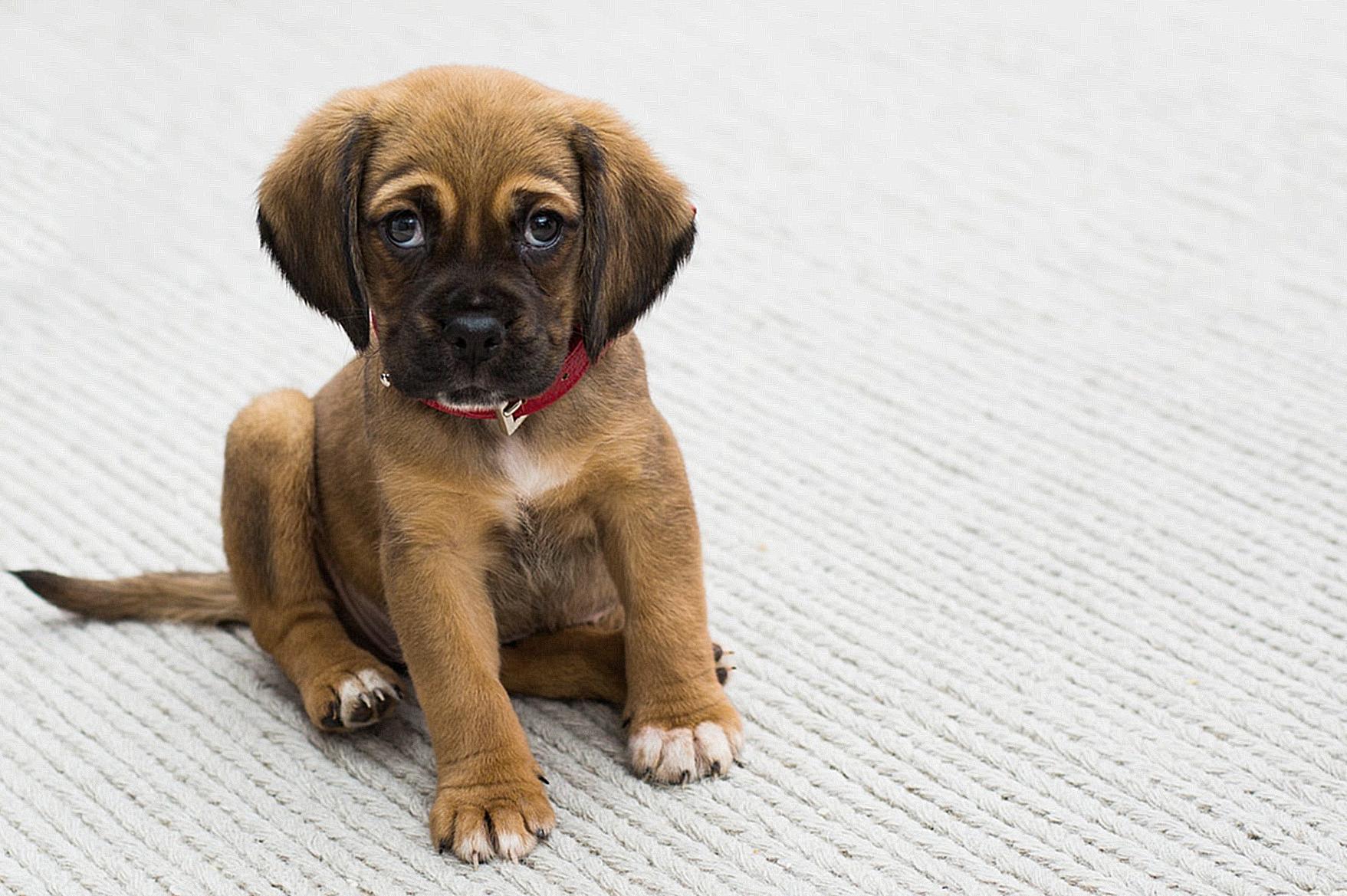
Getting Everyone Involved In The Training Process
Training your pup to recognize its name starts with getting everyone in the home involved with the process. It’s important to make sure the name is used in the same manner and is kept consistent when addressing the pup. Of course, by having all family members participate, the puppy learns to recognize its name and act accordingly. Everyone can reinforce the pup’s good behavior by responding when their name is called and giving them positive reward for recognizing it.
Examples Of Successful Training Processes
Stories of successful training processes can be very inspiring, especially when it comes to teaching a puppy its name. Learning from people who have used the same name and made sure to use it consistently help illustrate how much of a role practicing and positive reinforcement plays in teaching a pup its name. Seeing examples of people who have been committed to the process shows how sticking to the training process can lead to success.
Reinforcement Of Good Behaviors
It’s important to reward the pup for recognizing its name and responding appropriately to it. Reinforcing good behaviors with a treat or kind words can be a great way to get the puppy to learn its name even quicker than before. Positive reinforcement not only builds up a trusting relationship between you and the pup, but also helps speed up the learning process.
The Value Of Positive Reinforcement And Consistency
In order for the pup to learn its name, it’s important to be consistent with the training process. This means using the same name and using positive reinforcement in order to get the pup to react to it. When owners continue with the same positive reinforcement and use the same consistent name, the pup will start to recognize it much faster than before.
Quick Ways To Test The Pup’s Name Recall
Testing the pup’s name recall can be done in a variety of ways. One of the easiest ways to test the pup’s name is to use it in creative ways. This could mean playing a game of hide and seek where the pup has to recognize its name and come running or calling it when there is an object or toy that needs to be moved. It can also be done by keeping it simple, such as making eye contact and repeating the pup’s name multiple times to see if it will respond.
Tips To Build The Pup’s Name Recognition
Building up the pup’s name recognition is often the easiest part of the training process. There are several ways to do this. For starters, you can start by making sure to repeat the pup’s name whenever it does something good, such as when it comes when called or makes eye contact. This helps the pup recognize its own name and associate it with something positive. You can also play interactive games, such as toss-and-fetch or hide-and-seek, where the pup has to respond to its name before it can continue with the game. This helps strengthen the pup’s name recognition and reinforces good behavior.
Finally, don’t forget to reward the pup with praise or treats each time it responds correctly to its name. Wrapping up the training process with positive reinforcement will help ensure the pup will remember its own name each time it’s called.
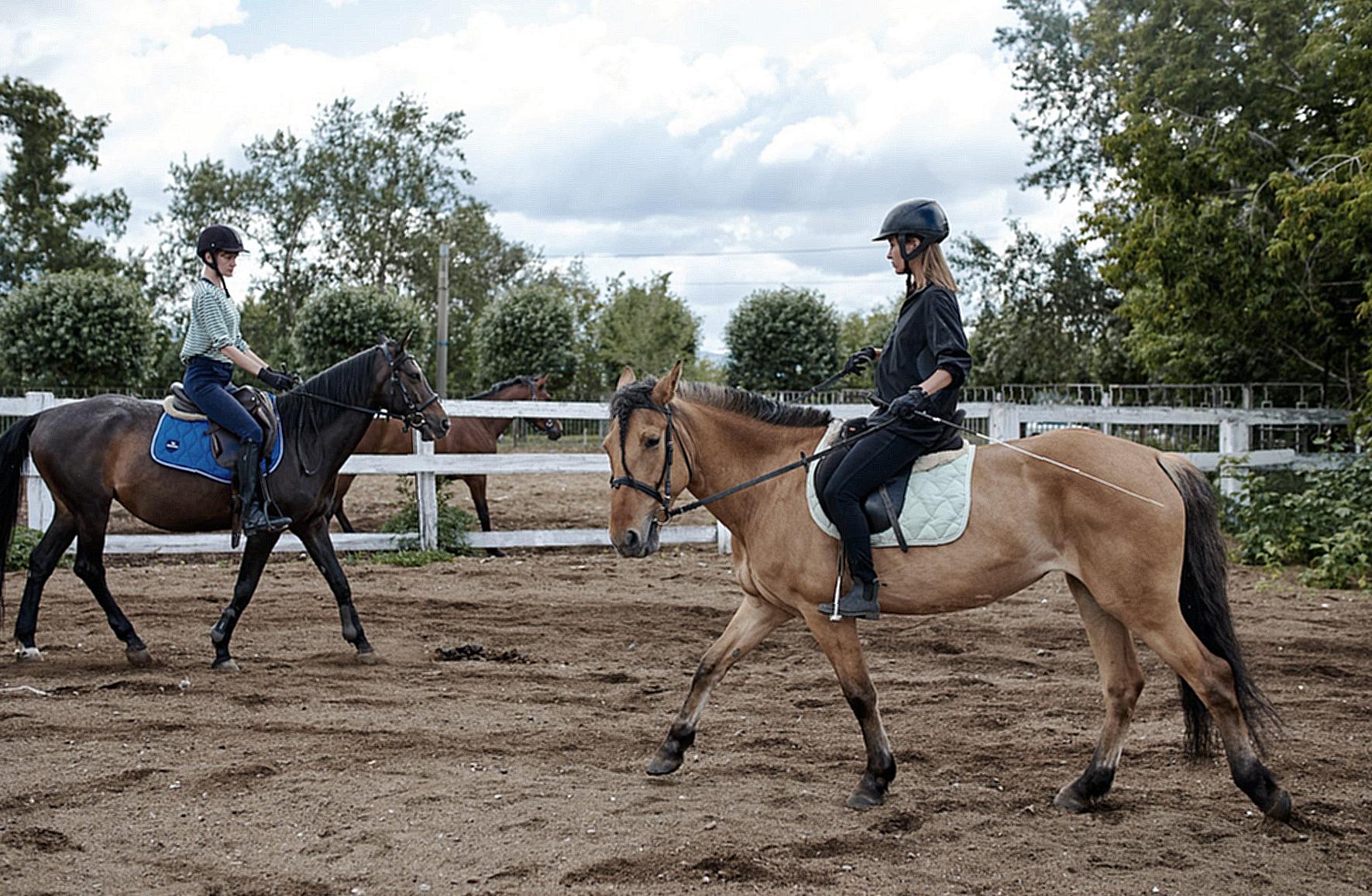
Utilizing Multiple Words In The Training Process
Teaching a puppy its name is one of the most important and earliest forms of training. By using more than one word and multiple techniques, owners can effectively communicate with puppies and help them understand the desired goal more easily.
Ways To Increase Understanding and Response
The use of multiple words is an effective way to significantly increase understanding and response. For example, adding a command such as “puppy, come!” will give puppies a better idea of what is expected and desired from them. The use of two words together also helps puppies understand that each word has a different meaning and how to respond to each one.
Adding multiple forms of positive reinforcement is also important to teaching a puppy its name. By pair words with both verbal and physical rewards (praise or treats), puppies are more likely to be receptive and understand the commands. Further, introducing different varieties of verbal rewards such as laughter, claps, and pats can also be incredibly beneficial for puppies.
An Example
Consider the case of a young puppy, Pat. Pat’s owner wanted to teach her puppy her name as one of the first commands. Initially, the owner used Pat’s name in combination with a pat on the head or a treat as reinforcement. This helped the puppy understand her name and learn the response that was desired. After Pat had become more familiar with her name, the owner began introducing different physical rewards such as claps, laughs, rubs and handshakes as additional positive reinforcement. Eventually, Pat was able to respond to her name without the need for other physical rewards.
Different Approaches To Teaching Puppy Its Name
Training with positive reinforcement is incredibly useful for teaching puppies their names. This method utilizes rewards to help puppies make connections with commands and also understand the appropriate response to each situation. Reward-based training is also extremely beneficial for ensuring puppies are aware of their age, size, and level of understanding the commands.
Positive Reinforcement
Positive reinforcement is a reward-based method for teaching puppies. Using this method, owners can reward puppies with treats, verbal praise, or physical rewards like pats or rubs in order to reward good behaviour and emphasize the desired response. As puppies learn more, rewards can also be used to reinforce the use of more complex commands.
A practical example of positive reinforcement training is teaching a young puppy the command ‘sit’. To teach this command, owners should hold a treat in front of the puppy’s nose and say the word “sit”. As the puppy follows the command and sits, the owner should immediately reward them with the treat. Doing this will help puppies learn the desired response to each command and also ensure that they are aware of their age, size, and level of understanding.
Consistency and Repetition
Consistency and repetition are important aspects of teaching puppies their names. Owners should be consistent in the words they choose to teach their puppies and use the same words or commands each time. Consistency will allow puppies to make the correct responses to the given commands and help them better understand the desired goal.
Additionally, repetition is key in reinforcing commands and teaching puppies their names. Pups need time to learn and practice the skills they are being taught, so owners should take advantage of this by repeating commands and using positive reinforcement to ensure puppies are comprehending the tasks they are being asked.
Time It Takes For A Dog To Learn Its Name
Teaching a puppy its name is a process that will take time and patience, though it is possible to fast-track the process with effective techniques. Generally, it will take two to three weeks for a puppy to learn its name, though this timeline could vary depending on the breed and age of the puppy.
The Expectations
The amount of time it takes for a puppy to learn its name depends on various factors, such as breed, age, and intelligence. Generally, it takes two to three weeks for a puppy to learn its name, though some puppies may learn faster while others take a bit longer.
The Reality
When teaching a puppy its name, owners should be prepared to invest a lot of time and patience into the process. It may take more than the expected time, and it is important not to become discouraged or impatient.
The Need For Patience
To effectively teach a puppy its name, owners need to invest time and patience. Consistency and repetition are key elements of this process and should be applied until the puppy is comfortable and responding correctly.
Stories From Successful Puppy Trainers
No two puppies are the same, so success stories from other owners can be incredibly helpful for those in their own training process. The stories of other owners who have successfully taught their puppies their names can inspire and motivate these owners to stay the course, despite various setbacks.

Learning About Other Ways To Utilize Your Puppy’s Name
It is important to become familiar with the various methods of utilizing your puppy’s name in order to help create a positive association with the name and to create more success with training. Thankfully, with the right approach, learning how long it takes for a puppy to learn its name needn’t be difficult. Below we’ll look at other ways to create a successful learning experience and get your puppy responding to its new name as soon as possible.
Introducing Your Puppy To Its Name
One of the best ways to introduce your puppy to its name is through repetition. The more you repeat your puppy’s name, the more it learns to associate that name with a positive experience. For example, when introducing your puppy to its name for the first time, make it a positive experience by saying its name with a happy, high-pitched voice. Use lots of enthusiastic praise and positive reinforcement when your puppy responds to its name. You can also create a game out of it by using something like clicker training. Every time your puppy turns to you when its name is said, click the clicker and offer a reward. Making it fun and rewarding will help to make sure your puppy associates its name with a positive experience.
Training Your Puppy To Respond To Its Name
In addition to the repetition methods of introducing your puppy to its name, you should also begin to train it to respond to its name. Start off with short training sessions and use treats, verbal cues and positive reinforcement whenever your puppy makes even small steps of success. If your puppy misbehaves and you want to regain its focus, call out its name in a firm and determined voice to show that what you are saying is serious business. By using the puppy’s name in different tones and situations, the puppy will soon learn to associate its name with different commands and behaviors. You can also use everyday activities, situations and activities tailored to your puppy’s breed and size to help reinforce the training.
Using Your Puppy’s Name To Prevent Negative Behaviour
Another excellent use of your puppy’s name is as a form of prevention. If your puppy is about to misbehave or do something bad, call out its name firmly and authoritatively in order to grab its attention and show that what it is about to do is wrong. This method can be especially useful if your puppy is the type to be easily distracted and get into trouble. The sound of its name should help to redirect its focus onto something less destructive or undesirable and can potentially help to prevent bad situations.
Utilizing Desensitization And Counterconditioning
Finally, you can also use desensitization and counterconditioning to help with training. Desensitization is the process of introducing a dog to a stimulus that it finds troubling or unpleasant, such as strangers, other pets, loud noises or any other situations which scare them. Counterconditioning is the process of changing and replacing an existing response with a more desirable one. This method can also be used to help with teaching your puppy to respond to its name. For example, if your puppy starts to bark and become agitated when its name is called, use treats and verbal cues whenever its name is said. This can help to create a positive association with its name and should help to change the negative reaction to a more positive one.
No matter how long it takes for a puppy to learn its name, with the right approach and methods, introducing and training your puppy to respond to its name needn’t be a difficult or complicated process. If you use positive reinforcement, repetition and desensitization and counterconditioning, you should be able to help your puppy learn its name and create a positive association with it in no time at all.
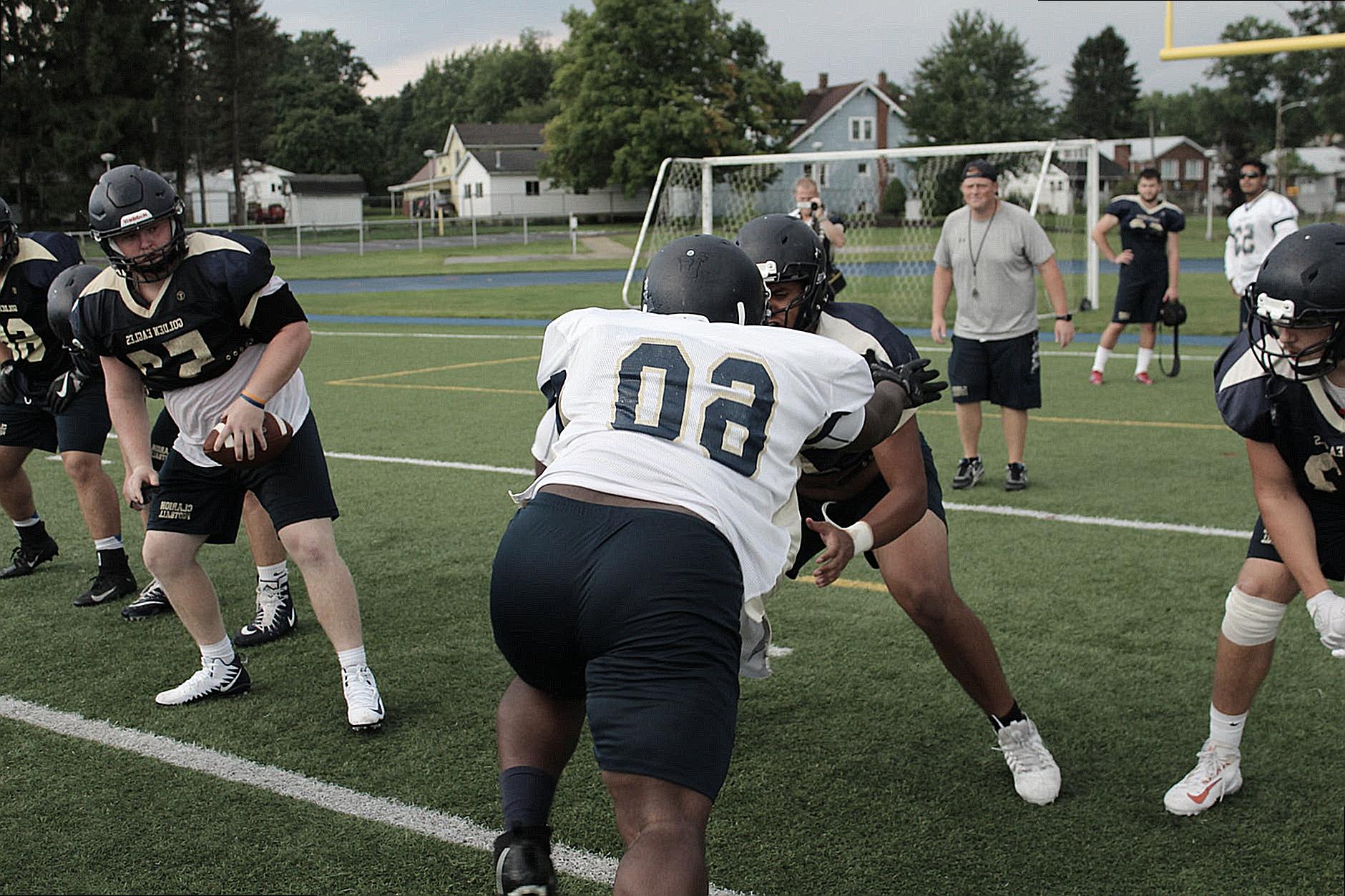
Reinforcing Training with Consistent Praise
Maneuvering the puppy-training process can often be challenging, but with patience and practice, you can help your pup understand their name. Reinforcing puppies with consistent praise is an integral part of teaching them quickly and effectively. By providing praise – like verbal assurance, treats, and petting – puppies are able to comprehend their name more clearly.
Types of Positive Reinforcement
Don’t be afraid to get creative with your approach to reinforcement. Positive reinforcement often comes in many forms, including verbal praise, petting or snuggling, treats, playtime and games, or a favorite toy. You can even try to combine multiple forms of reinforcement to make your puppy excited while they are learning their name. All of these forms of positive reinforcement encourage your pup to keep progressing and will help them learn their name quickly and efficiently.
Rewards of Being Consistent
Staying consistent throughout the training process is essential. Consistency helps puppies learn their name more quickly and builds obedience. Regular reinforcement also helps to further bond with your puppy, fostering trust and respect, making them more confident and allowing them to blossom.
Examples of Rewards for Progress
Providing rewards for your puppy’s progress helps accelerate the training process. Rewarding your pup for engaging in desirable behaviour, such as learning their name more quickly or responding to commands, is essential. You might consider offering a special treat, taking a short break from learning, or playing a fun game. Whatever the reward, make sure your pup enjoys the experience and appreciates the reward for their efforts.
Tips for Reinforcing Training and Using Positive Reinforcement
Training your puppy with positive reinforcement is a rewarding process, but there are ways you can ensure you’re providing the best reinforcement. Here are some key tips to keep in mind:
- Break routines up into simple tasks, which will make the topic easier to comprehend
- Give compliments, rewards or treats immediately after the correct response
- Make sure rewards or treats are easy to swallow, and don’t feed too many
- Reinforce praise with petting or cuddles
- Be consistent with the timing and amount of rewards
- If possible, use the same rewards or treats each time the pup learns the task correctly
- Keep the training sessions short – approximately 15 minutes – and repeat regularly.
By following these tips and providing consistent praise, you can help ensure your pup learns their name quickly and efficiently. With patience and practice, you’ll soon have a happy pup who knows their name and is ready to start exploring their new world.
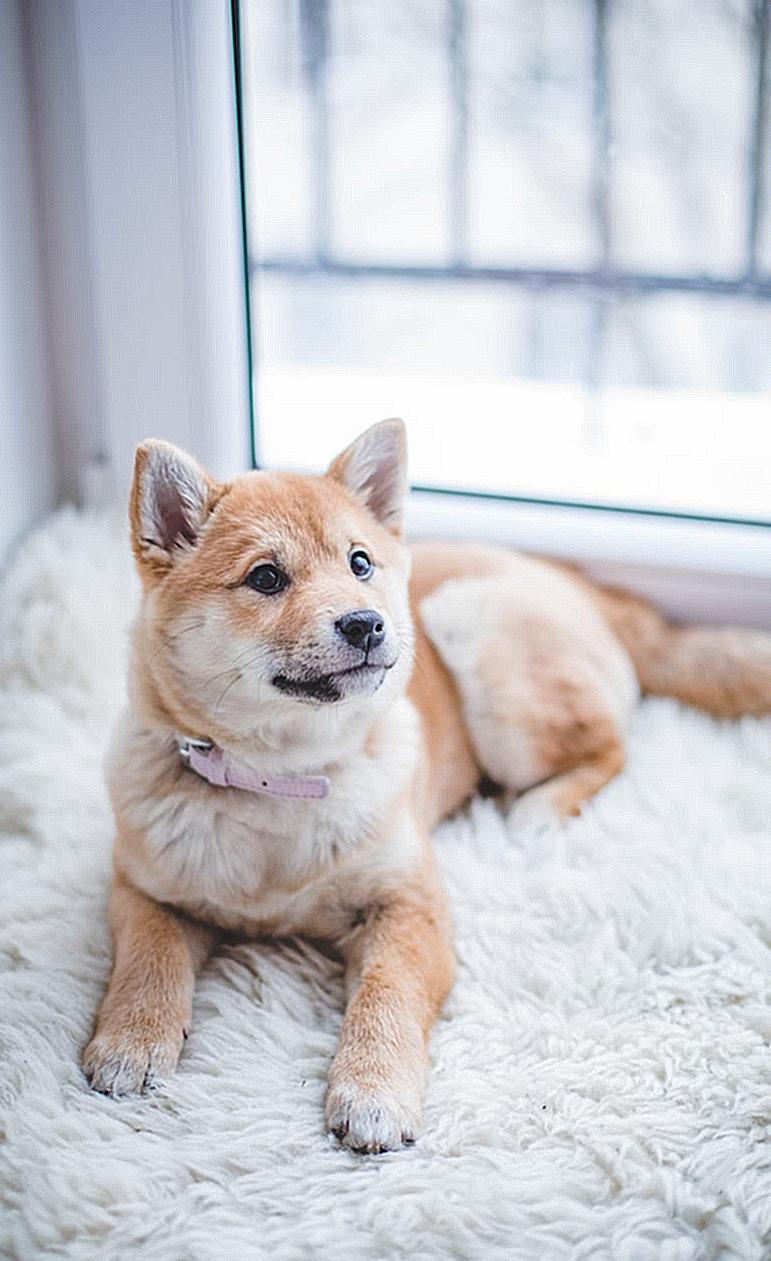
Conclusion
Overall, teaching a puppy its name is not only possible but also enjoyable for both puppy and pup parent. It is important that pup parents develop a training routine that works for them, introducing their puppy’s name in a positive and gradual manner. From using food rewards, to getting everyone involved and even using multiple words in the process, there are many effective and enjoyable ways for your pup to learn their name. Consistency is key when teaching your puppy its name, and pup parents can be sure to get the best results when they are being diligent and reinforcing training with consistent praise. With the right knowledge, strategies, and a positive attitude, pup parents and puppies can enjoy the learning process and quickly be on their way to a successful bond and relationship founded in your pup’s name.
